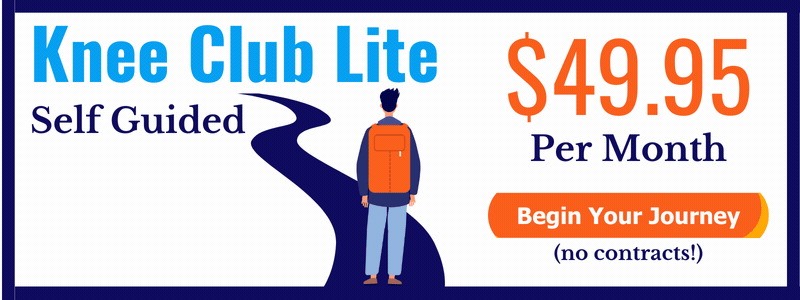The 5 Pillars Of Knee Pain Recovery – Part 5 (Breathing)
By Bill Parravano – The Knee Pain Guru
This article is the fifth in a series of five articles covering the five essential components to knee pain recovery.
None of what I am going to share with you today is to be taken as medical advice. This approach is what I used to get myself out of knee pain that I learned over the past nine years or so.
These are truths, as I know them. Use what you like and disregard the rest. If you have any concerns as to what you are to do, please consult your licensed healthcare professional.
So, what does breathing have to do with your knee pain?
Well, breathing is the essence of life!
You mark the time of a baby’s birth at the point when they take their first breath. You make sure a person is still alive by seeing if they are breathing or not.
Breathing is so key and so essential to life that you can’t live without it; yet, how many times do you find yourself throughout a normal day holding your breath?
I took a wilderness training class a few years ago, and we were told about the priority of things to look at in a survival situation and it went something like this:
You can’t survive three minutes without air, three days without water, and three weeks without food. So air was pretty high on the priority list for survival.
This point also directly ties into pillars 3 & 4 of my knee pain recovery program regarding exercise and stretching.
You see, when you breathe smoothly you begin to tap into your nervous system and relax your body which is very important for you getting over your knee pain.
So, let’s talk now about your nervous system a little bit and how this plays into the knee pain equation.
There are two main aspects of your nervous system: The sympathetic nervous system and the parasympathetic nervous system.
The sympathetic nervous system is what people are talking about when they say ‘fight, flight or freeze.’ This is the part of your nervous system that a long time ago kicked in when you saw the bear in the woods and needed to make a choice as to what to do to survive. It kicks in especially in stressful situations to keep you alive. This part of your nervous system releases adrenaline to make sure you can get out of that stressful situation. You probably have heard of people lifting real heavy objects off of children in a crisis situation. That’s the part of the nervous system I’m talking about.
The other part of your nervous system is the parasympathetic nervous system. It is the ‘rest and relax’ part of your nervous system. This is the part that says, “You’ve got to eat, rest, and take it easy for a while.”
The problem you run into with your knee pain is the sympathetic part of your nervous system doesn’t get shut off due to the way the pain in your knees keeps it stuck in the “ON” position all the time. It keeps going and going and going, kind of like the Energizer Bunny – just not in a good way.
This plays havoc on your knees as well as the rest of your body. Some of the symptoms you will notice as a result of your sympathetic nervous system being locked in the “ON” position are hypertension, increased heart rate, increased sweating, difficulty to digest food, difficulty to sleep, constipation, difficulty thinking – like “brain fog” – and easily irritable, like snapping at loved ones, and the list goes on and on.
You may be asking yourself, “What does this have to do with breathing, and more importantly, my knee pain?” Well, here’s the thing.
When you are doing correct exercises that both stretch and strengthen the tendons and the ligaments in your knees, and then begin to incorporate proper breathing, you begin to actively engage the parasympathetic aspect of your nervous system backing off the sympathetic aspect of your nervous system. The end result is you begin to relax both the knee pain as well as reduce the tension and stress built up in your entire nervous system due to your knee injury.
Let me cover proper breathing here for a moment. Proper breathing is defined as ‘a smooth flow of air in through your nose and out through your mouth.’ There are a couple of reasons to do proper breathing when doing a correct exercise in order to strengthen the tendons and the ligaments in your knees
The main reason – and it may sound obvious – is that you don’t pass out, because if you pass out, fall over, and hurt yourself. You have a whole host of other issues that you’ll have to deal with instead of just your knee pain, so make sure you breathe.
The second reason is you begin to control your movements, making them smooth and fluid, similar to that of a cat. This is opposite to the movements controlling you. You’re confined by that pain and tension you’re feeling in your knee.
Proper breathing allows you to “override” the tension stuck in your nervous system. Actively stimulating your body to rest and relax the tension in your knee and the end result is the reduction of your knee pain allowing your body’s own healing ability to kick in on its own.
I go into more depth on this in my E-book, “Stop Your Knee Pain Now.”


Could you please send me info on the best excercises to strengthen the knee after operation.